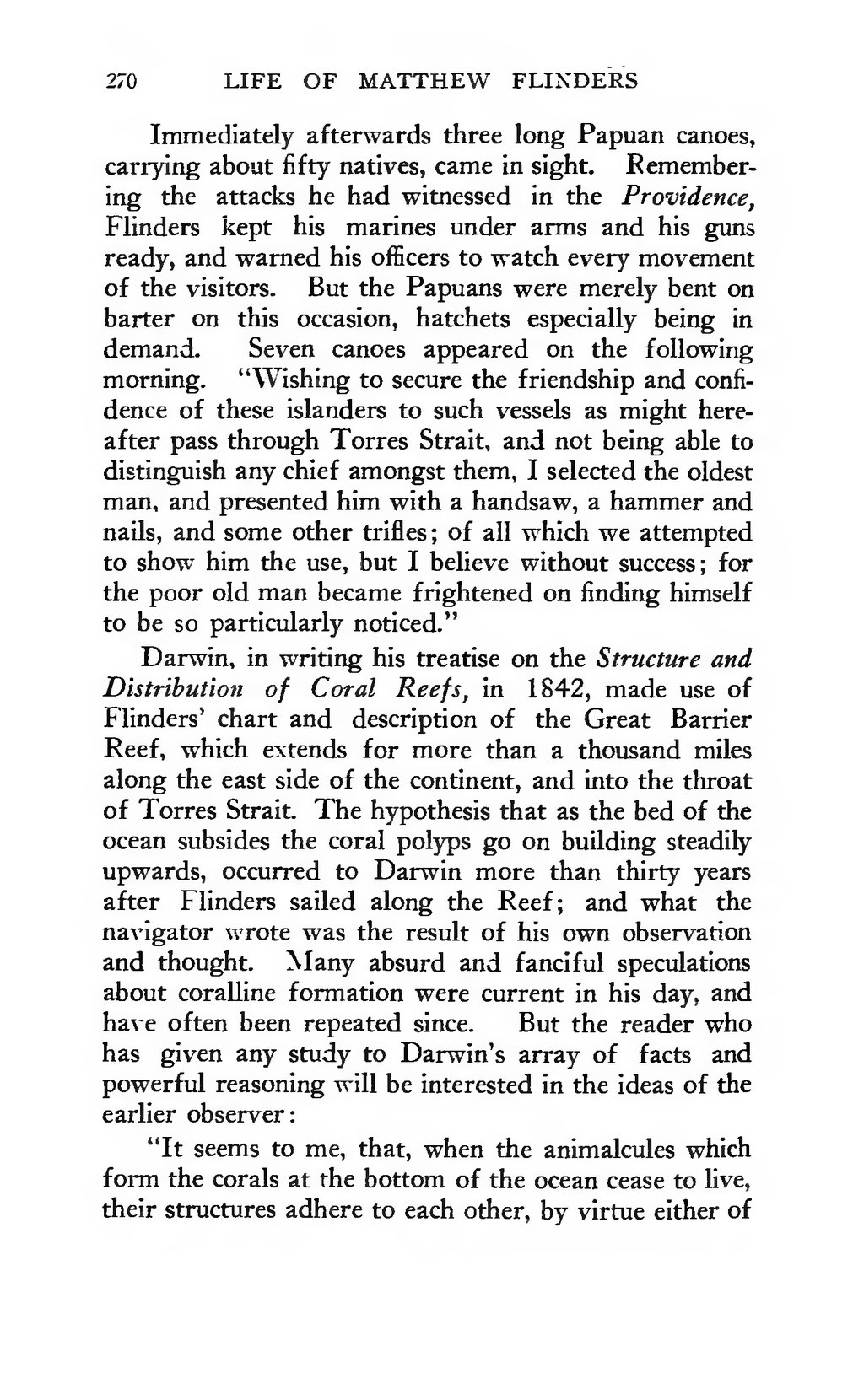Immediately afterwards three long Papuan canoes, carrying about fifty natives, came in sight. Remembering the attacks he had witnessed in the Providence, Flinders kept his marines under arms and his guns ready, and warned his officers to watch every movement of the visitors. But the Papuans were merely bent on barter on this occasion, hatchets especially being in demand. Seven canoes appeared on the following morning. "Wishing to secure the friendship and confidence of these islanders to such vessels as might hereafter pass through Torres Strait, and not being able to distinguish any chief amongst them, I selected the oldest man, and presented him with a handsaw, a hammer and nails, and some other trifles; of all which we attempted to show him the use, but I believe without success; for the poor old man became frightened on finding himself to be so particularly noticed."
Darwin, in writing his treatise on the Structure and Distribution of Coral Reefs, in 1842, made use of Flinders' chart and description of the Great Barrier Reef, which extends for more than a thousand miles along the east side of the continent, and into the throat of Torres Strait. The hypothesis that as the bed of the ocean subsides the coral polyps go on building steadily upwards, occurred to Darwin more than thirty years after Flinders sailed along the Reef; and what the navigator wrote was the result of his own observation and thought. Many absurd and fanciful speculations about coralline formation were current in his day, and have often been repeated since. But the reader who has given any study to Darwin's array of facts and powerful reasoning will be interested in the ideas of the earlier observer:
"It seems to me, that, when the animalcules which form the corals at the bottom of the ocean cease to live, their structures adhere to each other, by virtue either of

